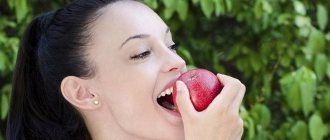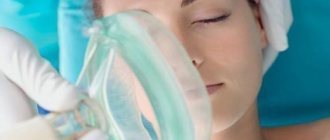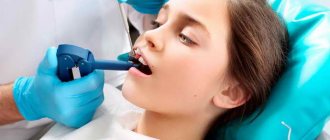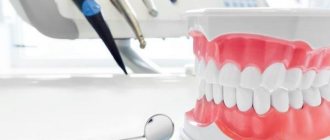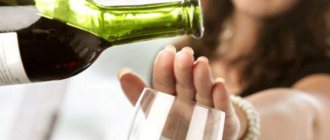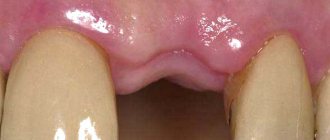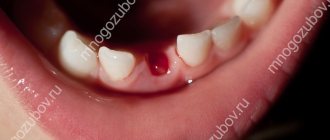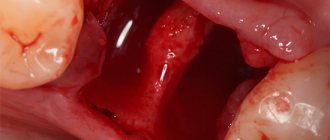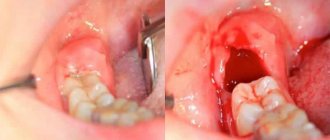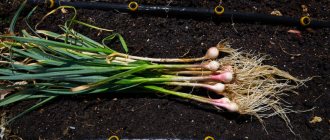Removal of a wisdom tooth is accompanied not only by painful sensations, but also by swelling and inflammation of the surrounding tissues. Normally, these inflammatory changes disappear by 2-3 days after the procedure. However, this is only possible if the patient complies with all the doctor’s recommendations regarding nutrition and treatment of the oral cavity.
Each of us is well aware of the general recommendations: apply cold to the sore cheek, temporarily stop smoking, do not sleep on the affected side, carefully handle the sutures left after wisdom tooth removal. Proper nutrition plays an equally important role in restoring tissue integrity and rehabilitation after removal. This article will discuss the basic principles of nutrition after wisdom tooth removal, which foods can be consumed and which cannot. What diet should the patient follow?
When can you start eating after wisdom tooth removal?
In response to this question, dentists will tell you that no earlier than 2 hours after the end of the procedure. These are general ideas. In fact, the time of first consumption of food depends on the degree of freezing. As soon as you feel that the anesthetic has stopped working and the sensitivity of your gums has returned, you can try dishes.
Important! For safety reasons, you should not consume food while the frost has not yet passed and the anesthetic is still active. This is due to the fact that while eating, the patient may accidentally bite his lip or cheek, and the pain protective reflex will not work. Due to the risk of injury, the first meal should coincide with the time of restoration of full sensitivity.
When can you eat?
As already mentioned, tooth extraction is a rather complicated procedure for both the doctor and the patient. She may make you feel not very good.
To avoid unpleasant symptoms, the development of infection, swelling and other unpleasant symptoms, follow all the doctor’s instructions that he gave you.
We will try to answer in detail the question “after tooth extraction, how soon can you eat?”
First, it’s worth noting that initially, when you just come from the doctor’s office, you shouldn’t eat for about two hours. The first thing to say is that the food you eat should not be too hot or too cold.
Choose the optimal, warm temperature. Violation of this rule can lead to bleeding, even if the wound initially went well enough. You cannot avoid acute pain if you consume something too hot or ice-cold. If you don't have any bothersome symptoms, such as a burning sensation in the wound, swelling, severe redness, or persistent bleeding, you can start eating food within two to three hours after you visit your doctor.
You can eat soon enough after tooth extraction. If blood continues to flow from the hole for more than an hour, we recommend that you consult a doctor again, because this phenomenon is not considered completely normal.
In the first days after you visit the doctor, you should avoid hard-to-chew foods, as they can harm the healing wound. Preference should be given to soft stews, porridges and purees.
It is also better to remove solid foods from the diet for a while. This will not only bring you a lot of discomfort, but will also significantly slow down healing.
You will also have to give up savory foods and sweet foods. This will only worsen the situation and complicate the healing of the hole. If you eat sweets after removal, be prepared for severe gum swelling.
The first day after tooth extraction: what is possible, what is not
On the first day, the patient experiences painful sensations. The pain is aching, twitching. During this period, you should not eat solid foods and dishes that are strong irritants:
- Spicy foods;
- Salted and pickled foods;
- Fatty and fried foods;
- Smoked food products.
The diet consists of porridges and dishes with a puree-like consistency. Food is served warm, but not hot, as there is a danger of the blood clot dissolving under the influence of high temperature.
Sample menu for the first day
| Breakfast: | Milk cereal porridge (oatmeal, buckwheat, corn) and warm green/black tea. |
| Dinner: | Puree pea soup (or cream of mushroom soup), mashed potatoes with pieces of steamed vegetables, warm berry compote. |
| Dinner: | Grated cottage cheese with sugar or jam, a glass of warm milk or yogurt. |
All drinks are served warm. Ideally, their temperature coincides with the temperature of the oral cavity. To prevent blood clot dissolution, you can drink drinks through a straw in small sips.
Meals for 2-4 days
Starting from the second day, the diet is expanded. Irritating foods are also excluded from the menu. Smoked, spicy, pickled and salty foods are not allowed. However, you can add coarser foods: pasta, steamed cutlets or fish, vegetables, fruits.
Food and drinks are served warm, not hot or cold. At this time, drinks can be drunk in regular sips, not through a straw.
Sample menu for 2-4 days
| Breakfast: | Cereal milk porridge with pieces of berries and fruits, yogurt, warm black tea. |
| Dinner: | Chicken soup, vegetable stew with steamed pork cutlet, berry compote. |
| Dinner: | Mashed potatoes with baked fish and vegetables, a glass of kefir. |
Cottage cheese, casseroles and puddings, and pieces of fruit are used as a snack. There are no restrictions on the types of drinks.
If everything went without complications, after 4 days of wisdom tooth removal, the diet can be composed of familiar foods. If suppuration, swelling, or increased pain occurs, the patient should immediately contact the dentist for advice and new nutritional recommendations.
Postoperative condition
Extracting a tooth from the alveolar socket is a surgical operation, so the consequences of the procedure affect the condition and well-being of the patient. After removing the crown and roots, short-term bleeding, swelling of the gums, hyperemia and pain spreading along the trigeminal nerve to the ear and eye area are likely.
The blood flow should stop on its own, and the swelling and redness will subside within a few days, provided that you treat the periodontium with care and rinse the mouth with medical solutions. To relieve toothache, the use of wide-spectrum analgesics is indicated.
Painkillers are allowed to be used to relieve pain.
The main danger for the hole in the alveolus is alveolitis - tissue inflammation that can develop into osteomyelitis and affect neighboring crowns if it is not stopped in time. The main condition for the development of alveolitis is the absence of a blood clot in the socket, which forms there naturally as a result of coagulation hemostasis.
The consequence is microbial invasion deep into the tissues, aggravated by the ingress of a nutrient-rich environment for bacteria - microparticles of food consumed by the patient. Systemic diseases can prevent blood clotting:
- hypertension leading to increased blood pressure;
- hemophilia;
- thrombocytopenic purpura;
- Rendu-Osler disease;
- liver diseases that interfere with the synthesis of prothrombin.
Important! A week before removal, you should stop using drugs that have an anticoagulant effect, and also undergo surgery if its date coincides with menstruation.
General rules of nutrition after wisdom tooth removal
- During the recovery period, you should not drink alcoholic beverages or drinks, as they irritate the oral cavity. Other drinks can be consumed without restrictions.
- Stop smoking for at least 4 days until the recovery period is over.
- On the first day after wisdom tooth removal, you should not rinse your mouth afterwards. On other days, carry out thorough disinfection at least 3 times a day. This way, pieces of food will not get stuck in the spaces between your teeth. This prevents infection.
- Avoid extreme temperature changes in the oral cavity. Serve all dishes and drinks warm so as not to injure inflamed gums and the hole that forms after tooth extraction.
- Chew foods only on the healthy side, trying not to unnecessarily disturb or strain the patient.
- To better cleanse your mouth, drink drinks after every meal, at least a couple of sips.
- Solid foods (nuts, chocolate, crackers) are abandoned for 7-10 days until the gums completely restore their integrity.
Why you shouldn't drink alcohol
This needs to be discussed separately. There are several reasons explaining the ban on drinking alcohol after tooth extraction.
- Alcohol thins the blood and increases blood pressure. These factors together cause increased bleeding from the damaged gum.
- Drinking alcohol-containing drinks, especially strong ones, is not complete without a snack, and you should not eat in the first hours after tooth extraction.
- Alcohol helps reduce the body's defenses and has a negative effect on the liver. And the presence of good immunity is especially important in the postoperative period, when the body must quickly restore damaged tissues and devote all its strength to the fight against harmful microorganisms that have entered the oral cavity.
- As a rule, after a tooth extraction operation, the doctor prescribes antihistamines and painkillers, and in some cases, antibiotics. All these medications cannot be used in combination with alcoholic beverages, as this increases the load on the liver many times over. She begins to work in enhanced mode, although, at first glance, this is not noticeable.
However, a hypertensive crisis or anaphylactic shock, which can occur when drugs and alcohol are combined, cannot be ignored. If this happens, the patient should be urgently taken to the clinic , otherwise death is possible.
Is it possible to drink beer after tooth extraction?
Many are sure that beer is not an alcoholic drink, so drinking it is harmless in any situation.
However, this is not the case. Firstly, the beer drink contains yeast-like microorganisms, which, when entering the oral cavity, begin to accumulate in the hole formed after removal and actively multiply there. As a result of this, an inflammatory process may develop and severe swelling of the cheeks and gums may occur.
Secondly, when drinking beer, active suction of air occurs from the neck of the bottle, resulting in the formation of a vacuum in the oral cavity. And this, in turn, threatens blood clot rejection , which can lead to alveolitis and the appearance of a dry socket.
Sample menu for the week
Nutrition after removal of the thyroid gland completely includes eating 5 times a day in small portions. A menu prepared in advance will help diversify your diet. Example of a 7-day regimen:
- For breakfast, eat a portion of semolina porridge and boil a soft-boiled egg. For lunch, eat half a chicken fillet and a glass of vegetable soup. Afternoon snack – 120 g of fruit salad and 5 biscuits. For dinner, prepare a small portion of vegetable stew (180 g). Before going to bed, drink 2/3 cup of kefir.
- Prepare a casserole of cottage cheese with raisins (180 g). For lunch, eat a glass of borscht without meat and half a serving of buckwheat porridge with mushrooms. As an afternoon snack - a banana and a few crackers (no more than 40 g). Before going to bed, drink 2/3 cup of low-fat yogurt without sweeteners.
- Steam 2 egg omelet with chopped tomato for breakfast. For lunch – 2 cabbage rolls and a glass of cabbage soup. Afternoon snack – a portion of cottage cheese with berries or dried fruits (120g). For dinner - mashed potatoes (180 g) and chicken soufflé (100 g). Before bed – 2/3 cup of fermented baked milk.
- Porridge with dried fruits (100 g), biscuits up to 40 g - breakfast. For lunch, a glass of kharcho soup and 100 g of steamed turkey. Snack – 100 g apple jelly. Have dinner with a glass of vegetable stew with meat, and before going to bed, drink 2/3 cup of yogurt.
- 2 cheesecakes with sour cream or berry jam, tea with milk - breakfast. For lunch, a glass of potato soup and a piece of boiled beef (100 g). Afternoon snack – 100 g of kelp salad. For dinner - stewed fish (100 g) with vegetables (150 g). Before bed – 2/3 cup of low-fat yogurt.
- For breakfast - 180 g of millet porridge with milk and a piece of bran bread (20 g). For lunch - chicken chop and 200 g of buckwheat soup. For an afternoon snack - 30 g of crackers with 120 g of fruit puree. Have dinner with a serving of rice and pumpkin casserole (250 g). Drink 2/3 cup of kefir at night.
- Sandwich with low-fat cheese and 1 soft-boiled egg for breakfast. Have lunch with a portion of noodle soup (180 g) and a steam cutlet made from lean meat (chicken or beef). For an afternoon snack, eat 150 g of vegetable salad. Dine with stewed potatoes (150 g), one tomato and steamed chicken breast (100 g). Drink 2/3 glass of low-fat milk at night.
What you can and cannot eat after thyroid removal
In addition to alcohol and cigarettes, the following products are prohibited for a patient with a removed thyroid gland:
- Legumes. They interfere with the absorption of synthetic hormones, which are necessary for people to live after gland resection.
- Smoked and fatty foods, offal, fast food. The fat in these foods will lead to rapid weight gain, which is impossible to lose if your metabolism is slow.
- Strong tea, coffee and cocoa. They retain fluid in the body, which also leads to weight gain.
- Food containing simple carbohydrates - sweets, confectionery, baked goods.
- Products with oxalic acid. It also interferes with the effect of maintenance therapy.
Be sure to include in your diet:
- Seafood – lean fish, seaweed, and other edible seaweed. They contain iodine, which the body needs after removal of the gland that produces iodine-containing hormones.
- Cereals and whole grain bread. The main source of complex carbohydrates, which provide long-term satiety and are absorbed without causing problems with extra pounds.
- Lean meat. It is impossible to completely eliminate meat from the diet, since it is the main source of B vitamins. You will have to give up pork and lamb and include lean beef, turkey, and chicken in your diet.
- Fruits and vegetables. You need to eat at least 300 g of vegetables and 200 g of fruits per day, as they contain essential microelements and vitamins. Products are selected according to the season.
- Eggs and dairy products.
